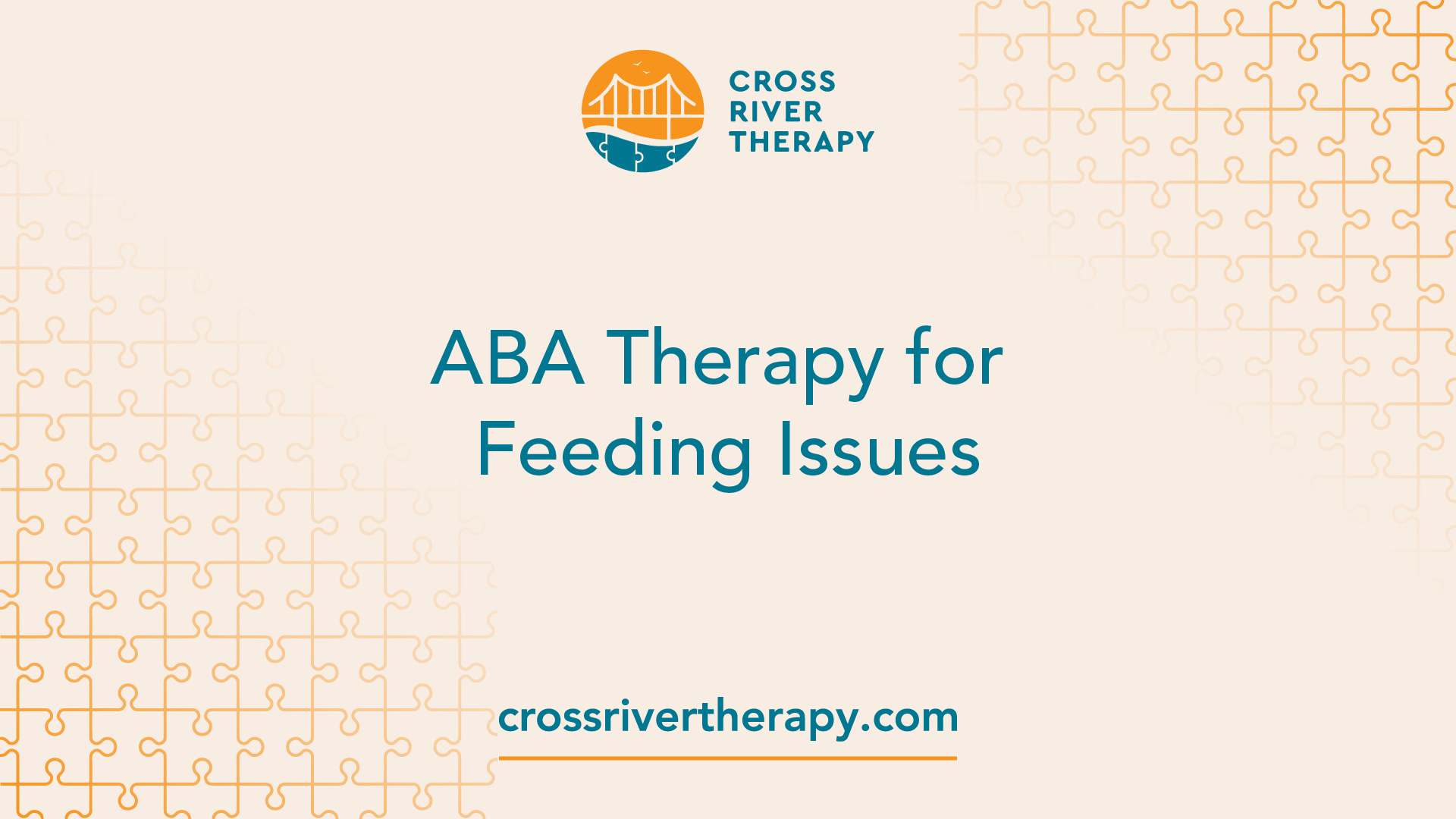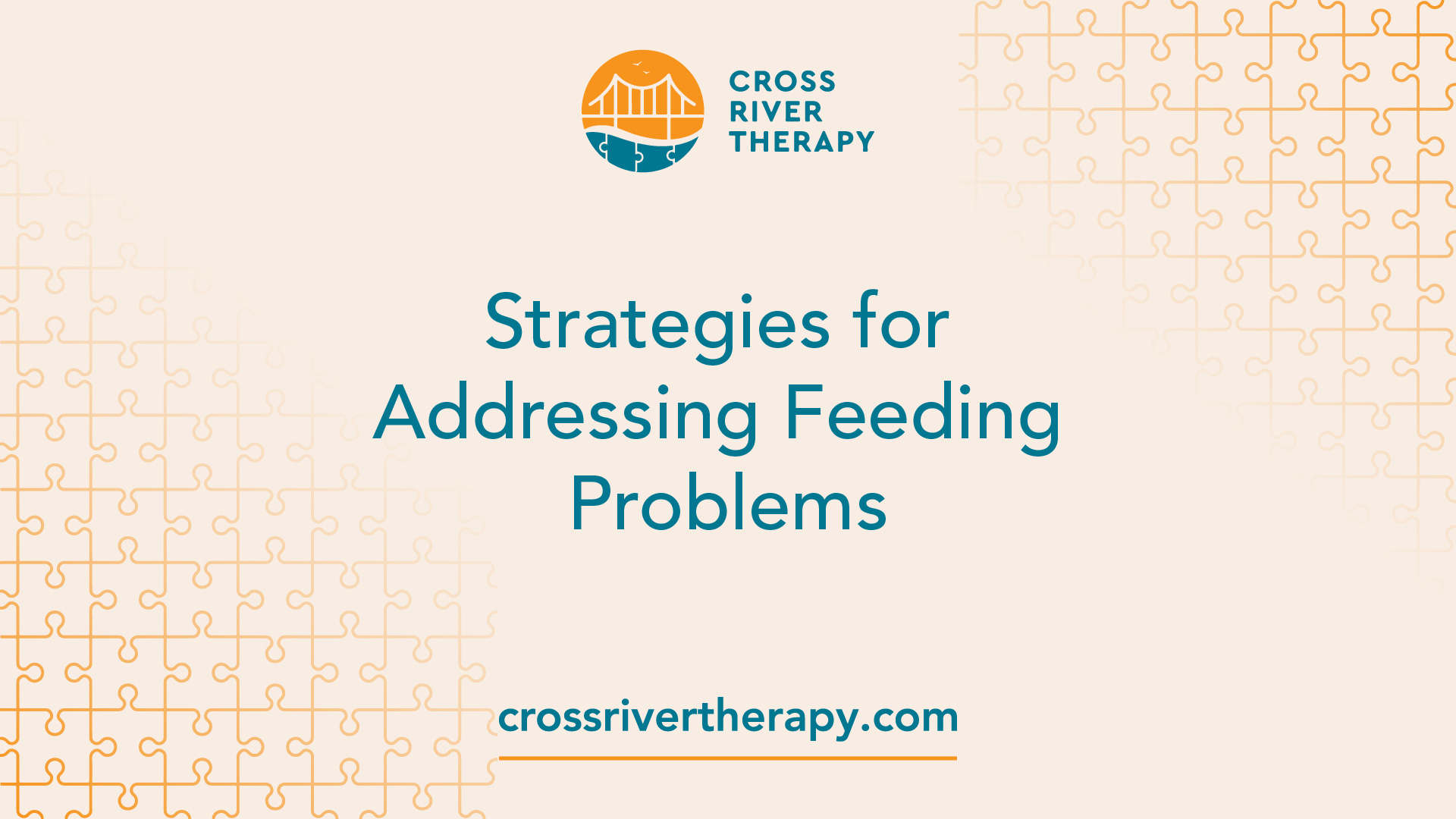Tackling Feeding Issues with ABA Therapy
Discover the power of ABA therapy for feeding issues in children with autism.

Understanding Feeding Challenges
When it comes to children with autism, feeding challenges are a common concern faced by parents. Pediatric feeding disorders (PFD) refer to feeding problems that begin in childhood and have adverse effects on health and development. These disorders are characterized by consuming a limited variety of foods, challenging mealtime behavior, and sometimes requiring medical intervention.
An estimated 80-90% of children with autism and related developmental disorders exhibit significant feeding problems, which often do not resolve without intervention. Feeding problems in children with autism are influenced by various factors, including sensory sensitivities and adherence to routines. These difficulties can greatly impact a child's nutritional intake and overall well-being [2].
Research suggests that up to 90% of children with autism experience feeding issues, with approximately 70% being selective eaters. These challenges can manifest in various ways, such as food aversions, limited food choices, difficulty transitioning to new foods, or problems with self-feeding. It is essential to address these feeding challenges to ensure adequate nutrition and promote healthy growth and development.
Impact of Pediatric Feeding Disorders
Pediatric feeding disorders can have significant consequences for a child's physical and emotional well-being. Insufficient nutrient intake and poor eating habits can lead to nutritional deficiencies, compromised growth, and impaired immune function. Additionally, feeding difficulties can contribute to excessive weight loss or gain, gastrointestinal problems, and mealtime stress for both the child and their caregiver.
Moreover, feeding challenges can impact a child's social interactions, as mealtimes often serve as opportunities for family bonding and socialization. The stress and frustration associated with feeding issues can result in mealtime battles and negative associations with food, further exacerbating the problem.
Prevalence in Children with Autism
Feeding problems are prevalent in children with autism, with estimates reporting that as high as 90% of children with autism experience feeding issues, and close to 70% are selective eaters [3]. The causes of these challenges are multifaceted, with factors such as sensory sensitivities, difficulties with oral motor skills, and rigidity around food preferences playing a role.
The high prevalence of feeding difficulties in children with autism highlights the need for effective interventions to support healthy eating habits and address nutritional concerns. Applied Behavior Analysis (ABA) therapy has emerged as a promising approach for addressing feeding issues among children with autism, offering evidence-based techniques and strategies to promote positive behaviors and improve mealtime experiences.
In the next section, we will explore the effectiveness of ABA therapy in addressing feeding issues and the techniques used in ABA feeding therapy.
ABA Therapy for Feeding Issues

When it comes to addressing feeding issues in children diagnosed with autism, ABA therapy (Applied Behavior Analysis) has proven to be an effective treatment. ABA feeding intervention focuses on helping children overcome aversions to new foods, expand their diet, learn to eat a variety of foods, maintain a healthy weight, and reduce the risk of choking or other health problems associated with eating difficulties [1].
Effectiveness of ABA Feeding Intervention
Numerous studies have shown the effectiveness of ABA therapy in increasing appropriate behavior and decreasing inappropriate behavior in children with autism [3]. This suggests that similar strategies can be applied to treat feeding problems in these children. ABA feeding intervention has been found to be successful in increasing food acceptance and improving mealtime behavior.
By utilizing positive reinforcement techniques such as the Premack principle and token economy strategies, ABA feeding therapy helps children with autism and other developmental disorders improve their feeding problems and have more positive mealtime experiences [1]. These techniques focus on reinforcing desired eating behaviors and gradually shaping them to improve the child's overall feeding skills.
Techniques Used in ABA Feeding Therapy
ABA therapy incorporates various techniques to address feeding difficulties in children with autism. One such technique is task analysis, which involves breaking down mealtime into manageable steps. This may include sitting at the table, tolerating food near the table, allowing food on a plate, and ultimately eating without challenging behavior. Task analysis helps children build confidence and competence in each step of the feeding process.
Additionally, ABA therapists utilize strategies such as differential reinforcement of alternative behavior, nonremoval of the fork, stimulus fading, escape extinction, noncontingent access to preferred items, and texture fading. These techniques have been shown to increase consumption of nonpreferred food and improve feeding behavior in children with autism.
By employing these evidence-based techniques, ABA feeding therapy aims to help children with autism overcome their feeding challenges and develop healthier eating habits. It is important to consult with a qualified ABA therapist to create an individualized treatment plan tailored to the specific needs of your child.
In the next sections, we will explore strategies for addressing feeding problems and promoting healthy eating habits for children with autism.
Strategies for Addressing Feeding Problems

When it comes to addressing feeding problems in children with autism, there are several strategies that can be implemented to promote healthy eating habits and expand food choices. Two effective strategies often used in ABA therapy for feeding issues are creating a structured eating environment and introducing new foods gradually.
Creating a Structured Eating Environment
Creating a structured eating environment can help individuals with autism feel more comfortable and relaxed during mealtimes. This involves establishing a consistent routine and setting clear expectations. Some key elements of a structured eating environment include:
- Establishing a routine: Establishing a regular schedule for meals and snacks can provide predictability and reduce anxiety. Consistency in mealtime routines helps individuals with autism feel more secure and prepared.
- Minimizing distractions: Reducing distractions during mealtimes can help individuals focus on their food. Turn off the television, eliminate loud noises, and create a calm atmosphere to promote a positive eating experience.
- Providing visual supports: Visual supports, such as visual schedules or visual cues, can help individuals with autism understand and follow the steps of a meal. Visual supports can also be used to communicate expectations and choices, providing structure and reducing anxiety.
Introducing New Foods Gradually
Introducing new foods gradually is an important strategy to expand food choices and encourage a varied diet. Many individuals with autism have sensory sensitivities that can make trying new foods challenging. By using a systematic and gradual approach, new foods can be introduced in a way that is comfortable and manageable. Here are some techniques used in ABA feeding therapy to introduce new foods:
- Food chaining: Food chaining is a technique that involves gradually introducing new foods that are similar in texture or flavor to familiar foods. By building on familiar tastes and textures, individuals with autism can expand their palate in a more comfortable and gradual manner.
- Positive reinforcement: Positive reinforcement is a powerful tool in ABA therapy for feeding issues. By providing praise, rewards, or other positive consequences when a child tries new foods or takes steps towards trying new foods, their motivation and willingness to explore different foods can increase.
- Shaping and desensitization: Shaping and desensitization techniques are used to gradually increase a child's acceptance and tolerance of new foods. Therapists may start by having the child interact with the food in a non-threatening way (e.g., touching, smelling), then gradually progress to more challenging steps, such as tasting or swallowing small amounts.
To make the process more enjoyable and less stressful, it's important to focus on gradual progress at a comfortable pace. Seeking the guidance of a trained professional, such as a behavior analyst, can provide valuable support and expertise in implementing these strategies effectively.
By creating a structured eating environment and introducing new foods gradually, individuals with autism can develop healthier eating habits and expand their food choices. It's important to remember that each individual is unique, and strategies should be tailored to their specific needs and preferences. With patience, positive reinforcement, and professional support, feeding problems can be addressed effectively, promoting a positive relationship with food and enhancing overall well-being.
Promoting Healthy Eating Habits
When it comes to individuals with autism, promoting healthy eating habits is crucial for their overall well-being. Encouraging variety in food choices and making mealtimes enjoyable can play a significant role in improving their eating experiences. Let's explore these strategies in more detail.
Encouraging Variety in Food Choices
Individuals with autism may have specific food preferences or sensory issues related to food color, taste, or texture, which can limit their willingness to try new foods. However, introducing a variety of foods is important for providing essential nutrients and a balanced diet.
To encourage variety in food choices, consider the following approaches:
- Gradual Exposure: Introduce new foods gradually, starting with small portions and incorporating them alongside familiar foods. This helps individuals with autism become more comfortable with different tastes and textures over time.
- Visual Supports: Use visual supports, such as pictures, charts, or menus, to create visual cues and support understanding of food options. This can help individuals with autism better comprehend and choose from a range of food choices.
- Modeling and Peer Influence: Children often mimic the eating behaviors of others. Encourage positive eating behaviors by modeling healthy food choices and inviting peers or siblings to join in mealtimes. Peer influence can be a powerful motivator for trying new foods.
- Food Preparation Involvement: Involve individuals with autism in food preparation activities. This can include simple tasks like washing fruits and vegetables or more complex activities like measuring ingredients or assembling a meal. Being involved in the preparation process can increase their interest and willingness to try new foods.
Making Mealtimes Enjoyable
Creating a positive and relaxed environment during mealtimes can make a significant difference in promoting healthy eating habits for individuals with autism. Here are some strategies to consider:
- Establish a Routine: Consistency and structure are important for individuals with autism. Establish regular mealtimes and stick to a predictable routine. This helps create a sense of security and predictability, making mealtimes more enjoyable.
- Reduce Distractions: Minimize distractions during mealtimes by turning off the television, putting away electronic devices, and creating a calm and quiet atmosphere. This allows individuals with autism to focus on their food and enjoy the sensory experience without unnecessary distractions.
- Positive Reinforcement: Use positive reinforcement techniques to encourage and reward positive eating behaviors. Praise and acknowledge individuals for trying new foods or eating a well-balanced meal. This positive reinforcement can help strengthen their motivation to continue exploring different food options.
- Building Independence: Promote independence in eating by gradually developing self-feeding skills and involving individuals in food-related decision-making. This can include teaching them how to use utensils, encouraging them to choose their own foods within a given range, and fostering autonomy during mealtimes.
Remember, every individual is unique, and what works for one person may not work for another. If you encounter challenges in promoting healthy eating habits, seeking professional support from an ABA therapist or a qualified healthcare professional can provide valuable guidance tailored to your child's needs.
By encouraging variety in food choices and creating enjoyable mealtimes, you can support individuals with autism in developing healthy eating habits and enhance their overall well-being.
ABA Therapy for Autism
ABA therapy has been a valuable intervention for children with autism and related developmental disorders since the 1960s. This therapy has been extensively studied and has shown significant effectiveness in improving various areas of functioning for individuals with autism.
History and Effectiveness
More than 20 studies have established that intensive and long-term therapy using ABA principles improves outcomes for many children with autism. These studies have demonstrated gains in intellectual functioning, language development, daily living skills, and social functioning. ABA therapy is considered an evidence-based best practice treatment by the US Surgeon General and the American Psychological Association, indicating its usefulness, quality, and effectiveness in treating individuals with autism.
Role of Behavior Analysts
In ABA therapy, a board-certified behavior analyst (BCBA) plays a crucial role. These highly trained professionals design and directly oversee ABA programs, tailoring them to each learner's skills, needs, interests, preferences, and family situation. BCBA's expertise ensures that the therapy program is individualized and focuses on specific goals that address the unique challenges faced by individuals with autism.
To implement ABA therapy, registered behavior technicians (RBTs) work directly with children and adults with autism. RBTs are trained and supervised by the BCBA to deliver therapy sessions, practice targeted skills, and work towards individual goals. The BCBA provides ongoing supervision and guidance to ensure the therapy is effective and tailored to the individual's needs.
By utilizing the expertise of behavior analysts and trained technicians, ABA therapy provides a comprehensive and individualized approach to help individuals with autism develop essential skills and improve their overall quality of life.
ABA therapy is not limited to addressing feeding issues alone. It has been proven effective in addressing various challenges faced by individuals with autism, such as self-injurious behaviors, repetitive behaviors, executive functioning, functional communication training, visual supports, positive behavior supports, adaptive skills, toilet training, and social interaction skills.
Innovative Approaches in Feeding Therapy
As the field of feeding therapy continues to evolve, innovative approaches have emerged to address the unique needs of children with feeding issues. Two notable approaches are telehealth and caregiver-implemented interventions, which offer promising benefits in the realm of behavior analytic feeding interventions. Additionally, evaluating long-term outcomes and maintenance of treatment gains is essential to ensure sustained progress.
Telehealth and Caregiver-Implemented Interventions
Telehealth, or the provision of healthcare services remotely through technology, has gained popularity in recent years, and it has also found its place in the realm of feeding therapy. Studies have shown that telehealth-based interventions can effectively address feeding challenges in children with autism and other developmental disorders. By utilizing video conferencing platforms, behavior analysts and therapists can remotely assess, diagnose, and provide guidance and support to parents and caregivers in implementing feeding interventions.
Telehealth offers several advantages, such as increased accessibility to specialized services, reduced travel time and costs, and the ability to receive ongoing support in the comfort of one's home. It also allows for real-time observation and feedback, enabling behavior analysts to make timely adjustments to intervention strategies. However, it is important to note that telehealth interventions may not be suitable for all cases, and a thorough assessment should be conducted to determine the appropriateness and feasibility of this approach.
In addition to telehealth, caregiver-implemented interventions have shown promise in helping children with feeding issues. These interventions involve training and empowering caregivers to implement behavior analytic strategies and techniques to address feeding challenges. Research has highlighted the effectiveness of caregiver-implemented interventions in expanding diet variety and improving feeding behaviors in children with food selectivity. By equipping parents and caregivers with the knowledge and skills to support their child's feeding development, these interventions promote consistency and generalization of learned behaviors outside of therapy sessions.
Caregiver-implemented interventions can be customized to meet the specific needs of each child and their family. Behavior analysts work closely with parents and caregivers to develop individualized treatment plans and provide ongoing guidance and support. This collaborative approach empowers caregivers to play an active role in their child's feeding journey and promotes the generalization of skills across various environments.
Long-Term Outcomes and Maintenance
It is essential to evaluate the long-term outcomes and maintenance of treatment gains in behavior analytic feeding interventions. While initial progress is crucial, it is equally important to ensure that the acquired skills and improvements in feeding behaviors are maintained over time [5]. Behavior analysts and therapists work closely with families to develop strategies that facilitate the transition from structured feeding protocols to more naturalistic settings, such as home and school environments. This helps to ensure that children can generalize their feeding skills and behaviors beyond the therapy setting.
Long-term outcomes and maintenance are evaluated through ongoing assessments and follow-up sessions. Behavior analysts monitor progress, provide support, and make necessary adjustments to intervention strategies as needed. This collaborative approach ensures that treatment gains are sustained and that children continue to make progress in their feeding development.
By incorporating innovative approaches such as telehealth and caregiver-implemented interventions, and by emphasizing the evaluation of long-term outcomes and maintenance, behavior analytic feeding therapy continues to evolve and improve. These approaches offer new avenues for supporting children with feeding issues and their families, ultimately promoting positive feeding experiences and healthy eating habits.
References
[1]: https://www.empowerbh.com/service/aba-feeding-therapy/
[2]: https://www.thetreetop.com/aba-therapy/managing-eating-challenges-in-autism
[3]: https://www.ncbi.nlm.nih.gov/pmc/articles/PMC2831447/
[4]: https://www.autismspeaks.org/applied-behavior-analysis
[5]: https://www.ncbi.nlm.nih.gov/pmc/articles/PMC10291736/



